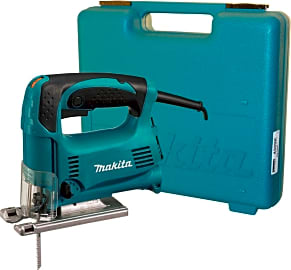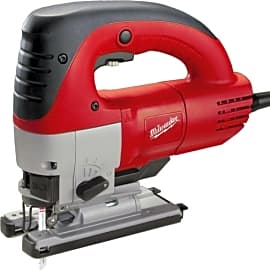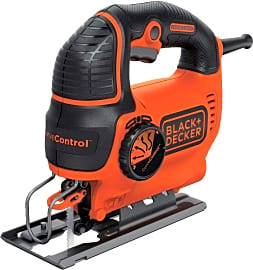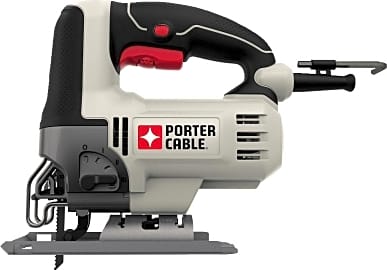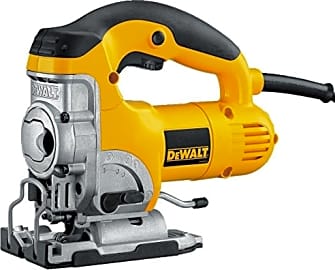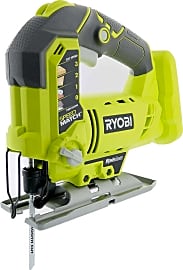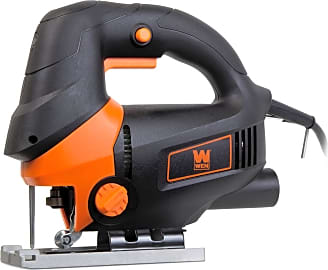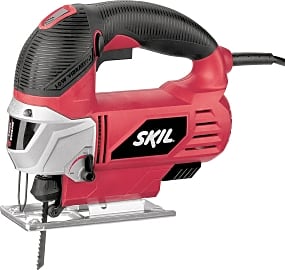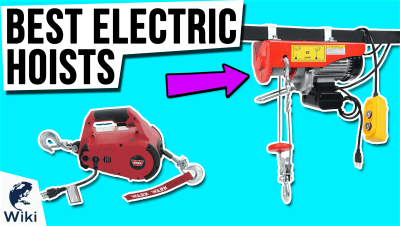The 10 Best Electric Jigsaws

This wiki has been updated 40 times since it was first published in June of 2015. Electric jigsaws are used to cut elaborate shapes in wood or metal that would be nearly impossible to create with other tools. They utilize thin blades that can easily produce 90-degree angles, loops, or waves, and their handheld design makes them convenient for use on just about any job site. These models vary in style and power, and several are suitable for professional contractors. When users buy our independently chosen editorial picks, we may earn commissions to help fund the Wiki.
Editor's Notes
June 14, 2019:
We identified that a new version of the Black + Decker Smart Select is now available. Although it has shed a couple features, it appears to deliver the same dependable performance at less than half the price — a win-win in our book. We updated the listing to include the new version of this model.
We noted during our assessment of the Black + Decker Max that multiple users have reported the tool overheating to the point where it begins smoking, which is clearly a safety hazard. We removed this item from the list. We replaced it with the Ryobi P5231, which, by contrast, operates smoothly and efficiently with a reliable battery that appears to hold up over time. It’s pretty affordable, and users who picked it up for home use seem to be highly satisfied with the results.
The Porter-Cable PCE345 was moved to a higher slot in the list. Its versatility (with four orbital settings and an easy-to-access dial with seven speeds) is readily apparent, and users rave about the value they’re getting. It’s quite useful for cutting smooth loops and arcs, particularly when the speed is set on low.
Special Honors
VonHaus Corded Straightforward and competent, this VonHaus model can achieve a cutting depth of 10 millimeters on steel, 30 millimeters on plastic, and 100 millimeters on wood — and it comes with blades for all these materials. You’ll feel comfortable gripping its contoured body, and its long cord will afford you plenty of maneuverability. vonhaus.com
Cutting Curves Without Cutting Corners
Fingers and hands are also kept away from the blade itself for increased safety.
Regardless of whether you consider yourself a skilled craftsman or construction worker, the versatility of your power tools is of paramount importance when working with many different types of materials on the job. If you need the ability to cut elaborate shapes into these materials with a professional degree of precision, look no further than the electric jigsaw.
Driven by an electric motor, the electric jigsaw is a power tool equipped with a narrow reciprocating blade that moves up and down to make curved and irregularly-shaped cuts into wood, metal, plastic, steel, fiberglass, drywall, and even ceramic tile. Additional components include: the shoe, blade clamp and roller guide, power trigger, lock-on button, orbital action dial, and variable speed dial.
Sometimes referred to as the baseplate or sole of the device, the shoe represents the metal base of the tool and sits on the surface of the material into which it cuts, ensuring the blade remains at a fixed angle. Pivoting the shoe at a 45-degree angle also allows the device to make beveled cuts.
Depending on the device's design, the blade clamp consists of either a spring-loaded lever or two screws that require tightening with an Allen key to keep the blade in place, while the roller guide provides additional support for the blade during the cutting process. By keeping the blade slotted, the roller guide prevents the blade from bending over time. The power trigger is typically pressure activated and located on the underside of the handle. The more pressure that is applied to the trigger, the greater the tool's cutting speed.
An electric jigsaw's overall speed is measured in strokes per minute, which refers to the number of times the blade moves up and down every 60 seconds. The lock-on button maintains a set speed for the device, which effectively minimizes user fatigue during prolonged cutting sessions. Ideal for making aggressive cuts into particularly thick materials, the orbital action dial controls the degree to which the blade moves back and forth and up and down. Finally, the calibrated variable speed dial allows for manual adjustments of the tool's cutting speed, depending on the thickness of the work material.
Next to the power drill, an electric jigsaw is one of the most versatile pieces of equipment available. It is one of few handheld tools capable of cutting precise curves, making it especially useful for the professional woodworker or carpenter. The jigsaw's blades are easy to change and capable of powering through materials of varying densities, thanks to the use of orbital and variable speed dials. While many electric jigsaws are corded, cordless options are also available for portability without the restrictions of a cable. The addition of a battery pack means the cordless jigsaw can be used at most any job site. With the proper instruction, the tool is also extremely kid friendly, as it sits directly on top of whatever surface it cuts, meaning it doesn't require the strength of an adult to hold it in place. Fingers and hands are also kept away from the blade itself for increased safety.
Versatility And Convenience Keep The Path Clear
Comfort, power, and speed should all be kept in mind when investing in an electric jigsaw. Depending on the materials used, most corded models offer an optimal power output range of between five and eight amps with several speed settings. This comes in handy for heavy-duty and professional use. A fully-padded handle grip with a power trigger for different operating speeds make prolonged cutting jobs a lot easier, while simultaneously mitigating fatigue and maintaining one's level of precision.
If you make a lot of straight cuts into boards and different woods, a built-in laser line or LED is another welcome advantage in terms of illuminating your cutting path. If wood constitutes the majority of work pieces in your trade or profession, then the jigsaw should also be equipped with a reliable dust collection port, keeping sawdust away from the materials and from affecting your own health. While the collection port is not a substitute for a respirator, it will minimize the amount of sawdust getting passed around as you work.
For time-sensitive situations that require the use of materials of different thicknesses, look for a quick-change blade system to ensure a seamless transition between jobs. Many electric jigsaws allow for their blades to be changed without the need for any tools at all.
A Brief History Of The Electric Jigsaw
Noting the rapid up-and-down motion of the needle on his wife's sewing machine, engineer and Scintilla AG employee Albert Kauffman began experimenting with a rudimentary design for the first electric jigsaw back in 1946. By replacing the machine's needle with a saw blade, Kauffman discovered that he could easily make curved cuts into wood using his adapted design.
Use of cordless jigsaws has also become more practical in recent years with regard to improving the device's range of portability to a variety of job sites.
Primarily in the business of marketing magnetos, the Swiss-based Scintilla AG company marketed Kauffman's invention under the brand name Lesto jigsaw in the United States starting in 1947. The tool was immediately recognized as a safer alternative to making long cuts using a circular saw.
Due to the tool's versatility and ease of use, its popularity continued to grow among both consumers and manufacturers alike. It eventually became one of the best selling power tools of the 1950s. Additional device features, including orbital cutting action and variable speed settings, emerged during this time. More recent developments to the electric jigsaw have included LED illumination and integrated dust collection. Use of cordless jigsaws has also become more practical in recent years with regard to improving the device's range of portability to a variety of job sites. However, the cordless design still has plenty of room for improvement to match the power output of corded jigsaws.


